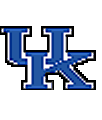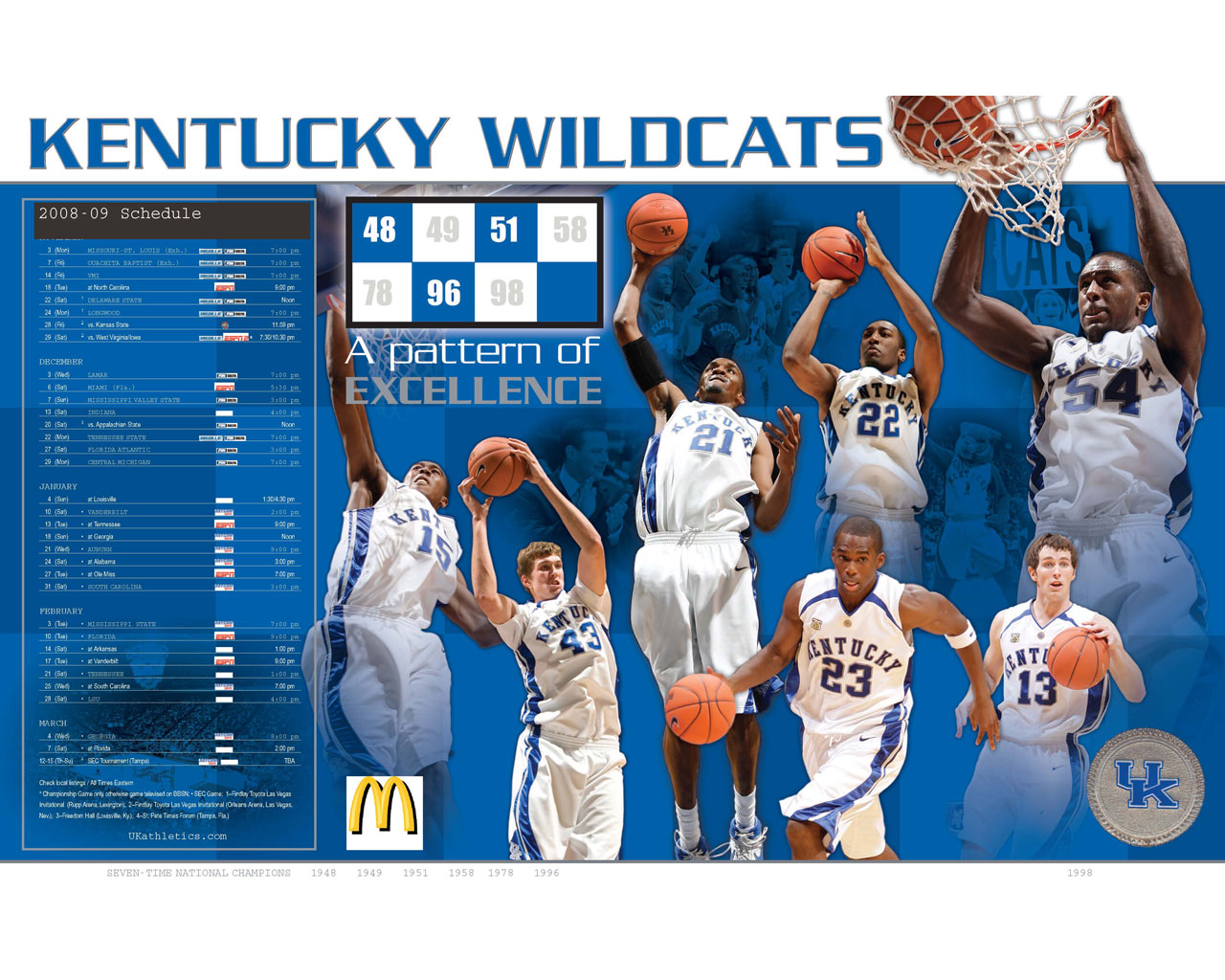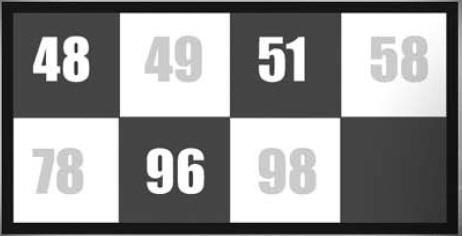BIG BLUE FANS FOR

BASKETBALL
2010-11 Season Analytical Writings
44
2010-2011 Post Mortem Analysis
In the Post Mortem Analysis following the end of the 2009-2010 season, I identified 4 areas that needed to show improvement in the 2010-11 season. These areas were:
- • Free Throw Shooting: At least 70% for the season, and no games below 60%
- • Three Point Shooting: At least 35% for the season, and no games below 20%
- • Turnover Rate: No higher than 18% for the season, and no games above 22%
- • Efficiency: A raw NGE of at least 0.25 points per possession for the season, with an offensive efficiency of at least 1.15 ppp and a defensive efficiency of no higher than 0.90 ppp.
These efficiency targets are the prescription for success in a final four year in and year out. The improvements that I identify here are relatively small when compared to this year's performance measures, achievable, and light years ahead of any similar measures, we have seen from any UK team since Pitino left.
This team met or exceeded many of these targets, and fell short on others, and while this team put on a spectacular post season push that ended with a one point loss in the Final Four, the very areas of short coming proved to be this team's undoing when it finally did fall short.
FREE THROW SHOOTING:
Coach Calipari has said more than once that he does not concern himself with free throw shooting. However, he should because it sends the wrong message to the players that free throw shooting is not important. Free throw shooting provides the most efficient way for any team to score, and it is important to winning championships.
During this season, this team's free throw shooting averaged 71% [greater than the target 70%] but in six games, this team failed to shoot at least 60%. In four of those games, the percentage was 50% [Game 3 v Oklahoma], 53% [Game 16 v Auburn], 59% [Game 18 at Alabama], and 54% [Game 34 v Princeton in the NCAA]. However, in the other two games, this team shot below 40% from the free throw line, 39% [Game 1 v East Tennessee State] and 33% [Game 39 v Connecticut in NCAA Final Four].
Of these 6 games, the Cats lost twice, 1 of 4 times when free throw shooting was between 50 and 60% and 1 of 2 times that the free throw shooting was under 40%. However, this team also lost 6 of 31 games in which it shot over 60% from the line, including losses to Connecticut in Maui [75%], at North Carolina [76%], at Mississippi [78%], at Florida [85%], at Vanderbilt [78%], and at Arkansas [87%]. Based on this record, it is difficult to attribute troubles to this team attributed to free throw shooting, and it is my opinion that the 71% season average should have been sufficient for this team, and only two losses all season can be attributed to poor single game free throw shooting, at Alabama, and the Final Four loss to Connecticut.
KENTUCKY 3-POINT SHOOTING:
During this season, this team's three point shooting averaged 40% [substantially greater than the target 35%]. In only 2 games, the Cats shot below the target floor of 20% [18% in Game 2 v Washington, and 16% at Arkansas].
Of these two games, the Cats lost once. However, the poor shooting against Washington would have produced a loss except Washington shot the ball even more poorly in that game, allowing the Cats to win by 7 points despite its poor shooting. However, this team also lost 8 of 36 games in which it shot over 20% from the arc, including losses to Connecticut in Maui [36%], at North Carolina [43%], at Mississippi [38%], and at Florida [58%]. Based on this record, it is difficult to attribute troubles to this team attributed to free throw shooting, and it is my opinion that the 40% season average should have been sufficient for this team, and only one loss all season can be attributed to poor single game three point shooting, at Arkansas.
KENTUCKY TURNOVER RATE:
During this season, this team's turnover rate averaged 16% [substantially lower than the target 18%]. In only 2 games, the Cats turned the ball over more frequently than the target ceiling of 22% [26% in Game 2 at Mississippi, and 25% v Tennessee].
Of these two games, the Cats lost once. However, this team also lost 8 of 36 games in which it turned the ball over less than 22% of its possessions, including losses to Connecticut in Maui [16%], at North Carolina [14%], at Alabama [15%], at Mississippi [13%], and at Arkansas [15%]. Based on this record, it is difficult to attribute troubles to this team attributed to its turnover rate, and it is my opinion that the 16% season average should have been sufficient for this team, and only one loss all season can be attributed to poor single game turnover rate, at Mississippi.
EFFICIENCY:
The team ended the 2010-2011 season with an average Raw Net Game Efficiency of 0.173 ppp, which is about 31% below the target value. The target offensive and defensive efficiencies were 1.15 ppp and 0.90 ppp respectively. This team ended with an offensive efficiency of 1.13 ppp [very close to the target], but the defensive efficiency of 0.955 ppp missed the mark by a considerable margin. Through 17 games, this team was on track, against a 14 game highly competitive non-conference schedule, and through the first 3 SEC games to exceed the target efficiencies [1.16 ppp offense; 0.90 ppp defense; and 0.26 ppp NGE]. However, over the next 10 SEC games, that saw the Cats drop 5, the efficiencies fell precipitously until they finally stabilized near the season final values prior to the Cats 10-1 final push.
The 2009-2010 defense was really never where Coach Calipari would like to see it but that defense out performed this defense on the season, primarily due to that fateful 10 game stretch.
Net Game Efficiency [NGE] is the most reliable measure of team power and strength. It is the difference between the team's offensive and defensive efficiencies, adjusted for strength of schedule. All season long, this team's NGE was lower than that possessed by champions over the last several years. The difference was due to a higher than desired defensive efficiency.
SUMMARY:
Since this team allowed its efficiency to decline between games 18 and 27, the W-L record masked over the real character of this team. This team's NGE is consistent with an Elite Eight team, but not a Final Four or championship team.
In the Post Mortem Analysis following the end of the 2009-2010 season, I identified 4 areas that needed to show improvement in the 2010-11 season. In my opinion, these same targets apply to the 2011-12 season.
- • Free Throw Shooting: At least 70% for the season, and no games below 60%
- • Three Point Shooting: At least 35% for the season, and no games below 20%
- • Turnover Rate: No higher than 18% for the season, and no games above 22%
- • Efficiency: A raw NGE of at least 0.25 points per possession for the season, with an offensive efficiency of at least 1.15 ppp and a defensive efficiency of no higher than 0.90 ppp.
These efficiency targets are the prescription for success in a final four year in and year out.
Submitted by Richard Cheeks


Submitted by Richard Cheeks
Go Back
Cats End Season In Final Four; Lose To Connecticut by 1; Finish 29-9
Copyright 2011
SugarHill Communications of Kentucky
All Rights Reserved